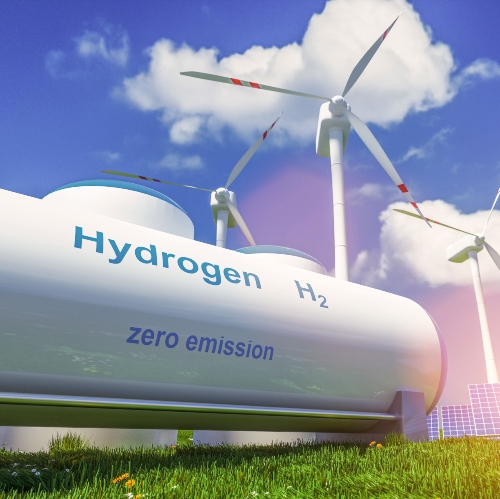SoCal Unveils Plan to Supply Los Angeles with Green Hydrogen
(Reuters) - Southern California Gas, the largest U.S. gas utility, unveiled a major proposal Thursday to deliver hydrogen produced by wind and solar energy to the Los Angeles area to help wean transportation, manufacturing and electricity sectors off fossil fuels.

The project, dubbed the Angeles Link, would help California achieve its goal of carbon neutrality by 2045, the company said. It could eventually deliver enough green hydrogen to equal nearly a quarter of the natural gas the utility delivers today, it said.
SoCalGas, a division of Sempra Energy, also has a target of net zero greenhouse gas emissions in its operations by 2045. The company expects to meet that goal by supplying its nearly 22 million customers increasingly with gas produced from organic waste and hydrogen.
Companies and governments have touted green hydrogen, derived from water using electrolyzers powered by renewable energy, as a way to cut carbon emissions, particularly for sectors like heavy industry that are difficult to electrify. SoCalGas said a new pipeline would transport the hydrogen from parts of the state with large renewable energy resources into the Los Angeles area.
It now costs about four times more to make green hydrogen than that made with natural gas, a fossil fuel.
SoCalGas said the Angeles Link, which could help replace up to 3 million gallons of diesel fuel per day in the region's trucking industry and convert up to four gas power plants to hydrogen, will help reduce the fuel's cost.
"Economies of scale are important to bring down the cost of the delivered hydrogen," Neil Navin, vice president of clean energy innovations at SoCalGas, said in an interview. "That's the importance we see in our project. Delivering hydrogen at scale will help to reduce that cost."
With Thursday's announcement, SoCalGas said it was initiating steps to define the scope of the project, including a timeline for construction and operation. It yet to identify a company that would produce the hydrogen.
Related News
Related News

- Keystone Oil Pipeline Resumes Operations After Temporary Shutdown
- Freeport LNG Plant Runs Near Zero Consumption for Fifth Day
- Biden Administration Buys Oil for Emergency Reserve Above Target Price
- Mexico Seizes Air Liquide's Hydrogen Plant at Pemex Refinery
- Enbridge to Invest $500 Million in Pipeline Assets, Including Expansion of 850-Mile Gray Oak Pipeline




Comments